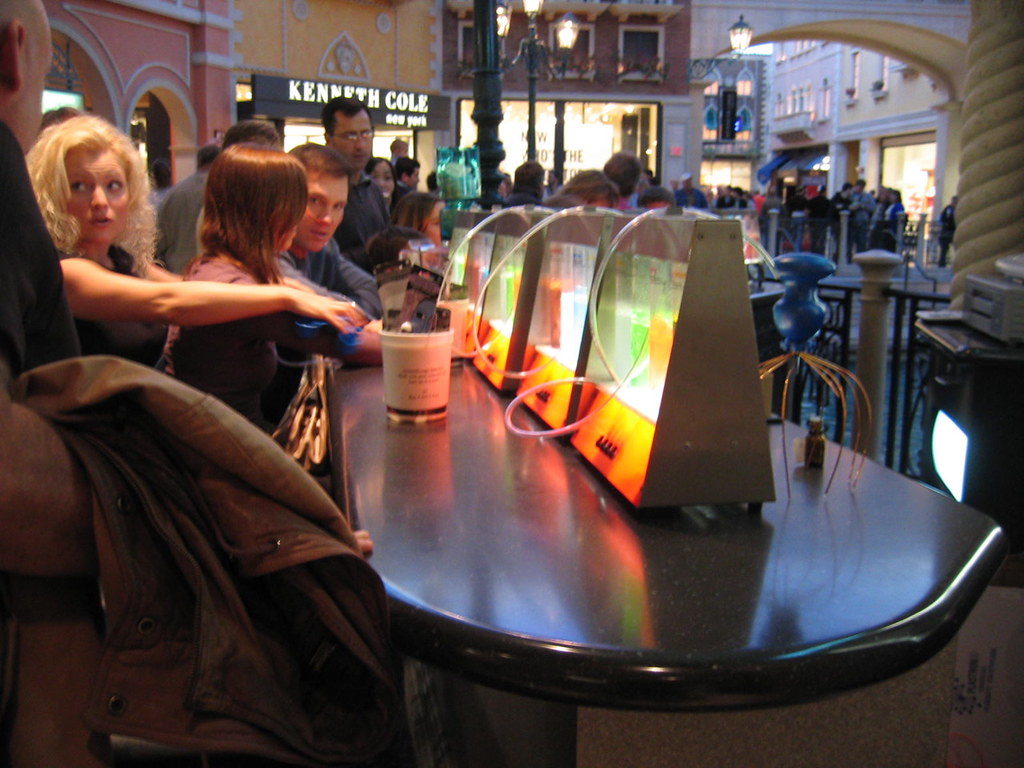In recent years, oxygen bars have become a popular trend in various cities around the world. These establishments allow customers to inhale oxygen, often mixed with scents or essential oils, in an environment designed for relaxation. The premise is simple: by breathing in concentrated oxygen, you may experience enhanced relaxation, energy, and overall wellness. However, like many wellness trends, the question arises—are oxygen bars truly beneficial for wellness? To understand the potential benefits and drawbacks, we need to explore what oxygen bars are, how they work, and the science behind them.
What Are Oxygen Bars?
An oxygen bar is a place where people can inhale oxygen at concentrations higher than the normal air we breathe. In a typical oxygen bar, customers sit down, and a nasal cannula (a tube with prongs that fit into the nostrils) is provided. The cannula delivers air that contains approximately 90-95% oxygen. In comparison, the normal air we breathe contains about 21% oxygen, with the rest being nitrogen and other trace gases.
Oxygen bars often offer a variety of scents or flavors, including lavender, peppermint, or citrus, which are achieved by adding essential oils or other aromas to the oxygen stream. These aromas are said to enhance the experience by providing a sense of relaxation or invigoration, depending on the chosen scent.
How Do Oxygen Bars Work?
The process is quite simple. When you breathe in air from an oxygen bar, you’re getting a higher dose of oxygen than you would from the surrounding environment. This increased oxygen flow is supposed to help your body in a number of ways. Sessions typically last between 10 and 30 minutes, and many oxygen bars claim benefits like increased energy, enhanced mood, and better concentration.
The Popularity of Oxygen Bars
Oxygen bars first gained popularity in the late 1990s, particularly in cities like Las Vegas, where they became part of the nightlife and wellness scene. They are often located in spas, airports, and shopping malls, offering a quick “pick-me-up” for people on the go. In some cases, they are also marketed as a remedy for hangovers, fatigue, and jet lag. However, while the concept sounds appealing, it’s essential to take a closer look at whether there is scientific backing for the claimed benefits.
The Science Behind Oxygen and Wellness
To evaluate the potential benefits of oxygen bars, we first need to understand how oxygen affects the body. Oxygen is, without a doubt, essential for human life. Every cell in the body requires oxygen to produce energy in the form of adenosine triphosphate (ATP), the molecule that powers cellular activities. The air we normally breathe provides just enough oxygen to meet our needs, but proponents of oxygen bars claim that breathing concentrated oxygen can offer additional benefits.
Claims of Oxygen Bar Benefits
Oxygen bars often market themselves as providing several wellness benefits, including:
- Increased energy
- Improved mental clarity
- Reduced stress
- Faster recovery from exercise
- Relief from headaches and migraines
- Hangover relief
- Improved sleep
These claims are typically supported by anecdotal evidence from users who report feeling better after inhaling concentrated oxygen. However, the scientific support for these claims is mixed at best.
Do We Really Need More Oxygen?
Under normal circumstances, healthy individuals have a blood oxygen level (oxygen saturation) of around 95-100%. This means that our bodies are already getting plenty of oxygen from the air we breathe. When you inhale air from an oxygen bar, you may temporarily increase the amount of oxygen in your blood, but the body quickly returns to its normal oxygen saturation level once the session is over.
In fact, your body is designed to regulate oxygen levels very efficiently. Breathing air that contains too much oxygen for an extended period can actually be harmful, as it may cause oxygen toxicity, a condition that damages lung tissue. However, the short sessions at oxygen bars are unlikely to lead to oxygen toxicity, as the exposure time is limited.
Examining the Benefits of Oxygen Bars
1. Increased Energy
One of the most commonly cited benefits of oxygen bars is the boost in energy that users report after a session. The logic behind this claim is that by increasing oxygen levels in the blood, the body’s cells can produce more energy, leading to a feeling of increased vitality.
While it is true that oxygen is necessary for energy production, studies have shown that in healthy individuals, breathing in higher concentrations of oxygen does not significantly increase energy levels. This is because the body already receives enough oxygen from normal air to meet its energy needs. The temporary feeling of increased energy that some people experience at oxygen bars may be due more to a placebo effect or the relaxing environment than to the oxygen itself.
2. Improved Mental Clarity
Another popular claim is that oxygen bars can improve mental clarity and focus. Again, oxygen is vital for brain function, as the brain consumes a large amount of the body’s oxygen supply. However, just like with energy levels, healthy individuals usually have sufficient oxygen for optimal brain function.
There is limited scientific evidence to support the idea that breathing concentrated oxygen improves cognitive performance in people who are not suffering from oxygen deprivation. In situations where oxygen levels are reduced, such as at high altitudes, increasing oxygen intake can help restore cognitive function. But for the average person at sea level, the benefits are likely minimal.
3. Stress Reduction
Many oxygen bars offer scented oxygen with calming aromas like lavender or chamomile, which are associated with stress reduction. While these scents may help you feel more relaxed, the effect is probably due to the aromatherapy rather than the oxygen itself.
Aromatherapy has been shown to have a calming effect on the nervous system, and some studies suggest that certain scents can reduce anxiety and stress. However, the oxygen you’re breathing at an oxygen bar is unlikely to have a significant impact on stress levels, beyond the benefits of the relaxing environment and the pleasing aromas.
4. Faster Recovery from Exercise
Some athletes use oxygen therapy as a way to speed up recovery after intense physical activity. The idea is that by increasing oxygen intake, you can help your muscles recover more quickly by promoting the removal of lactic acid and reducing inflammation.
There is some evidence to suggest that supplemental oxygen may benefit people recovering from intense exercise, especially if they are in an environment with lower oxygen levels, such as at high altitudes. However, for the average person working out at sea level, the benefits of oxygen bars for post-exercise recovery are likely to be modest.
5. Hangover Relief
Oxygen bars are often marketed as a remedy for hangovers, with proponents claiming that the extra oxygen helps the body metabolize alcohol more quickly and alleviates symptoms like headaches and nausea. While it is true that alcohol consumption can lead to oxygen deprivation, there is little scientific evidence to support the idea that oxygen bars are an effective hangover cure.
Hangover symptoms are primarily caused by dehydration and the byproducts of alcohol metabolism, and while supplemental oxygen may help alleviate symptoms of oxygen deprivation, it is unlikely to have a significant impact on the other factors contributing to a hangover. Drinking water and resting are likely to be more effective remedies.
6. Improved Sleep
Some people believe that breathing concentrated oxygen before bed can improve sleep quality by promoting relaxation and reducing anxiety. While oxygen is certainly important for maintaining healthy sleep patterns, there is little evidence to suggest that breathing higher concentrations of oxygen improves sleep in healthy individuals.
In people with certain sleep disorders, such as sleep apnea, supplemental oxygen may be necessary to maintain healthy oxygen levels during sleep. However, for most people, the oxygen provided at an oxygen bar is unlikely to have a significant impact on sleep quality.
Potential Risks and Drawbacks
While oxygen bars are generally considered safe for most people, there are a few potential risks and drawbacks to be aware of.
1. Oxygen Toxicity
As mentioned earlier, breathing in too much oxygen for an extended period can lead to oxygen toxicity, a condition that damages the lungs and other tissues. However, the short sessions at oxygen bars are unlikely to cause this condition. Still, individuals with certain medical conditions, such as chronic obstructive pulmonary disease (COPD), should be cautious when using oxygen bars, as too much oxygen can interfere with their body’s ability to regulate oxygen levels.
2. Risk of Infection
Another potential concern is the risk of infection from the equipment used at oxygen bars. If the nasal cannulas and other equipment are not properly sanitized between uses, there is a risk of spreading infections. Reputable oxygen bars should follow strict hygiene protocols to ensure that all equipment is clean and safe to use.
3. Cost vs. Benefit
Oxygen bar sessions can be relatively expensive, with some establishments charging upwards of $1 per minute. Given the limited scientific evidence supporting the benefits of oxygen bars for healthy individuals, the cost may not be justified for most people. In many cases, the feeling of relaxation and invigoration that customers experience may be due more to the environment and placebo effect than to the oxygen itself.
Conclusion
While oxygen bars may offer a relaxing and enjoyable experience, the scientific evidence supporting their health benefits is limited. For healthy individuals, breathing concentrated oxygen is unlikely to provide significant wellness benefits beyond what is already achieved by normal breathing. The claims of increased energy, improved mental clarity, stress reduction, faster recovery from exercise, hangover relief, and improved sleep are largely anecdotal, and any benefits are likely to be modest at best.
That said, oxygen bars can be a fun and novel experience for those looking to try something new. The relaxing atmosphere and pleasant scents may provide a temporary sense of well-being, even if the oxygen itself is not the primary contributor. However, for those seeking real and lasting health benefits, other wellness practices, such as regular exercise, a balanced diet, and proper hydration, are likely to be far more effective and scientifically proven.
In conclusion, while oxygen bars may not live up to all of their wellness claims, they can still offer a unique and enjoyable way to unwind—just don’t expect miracles.




